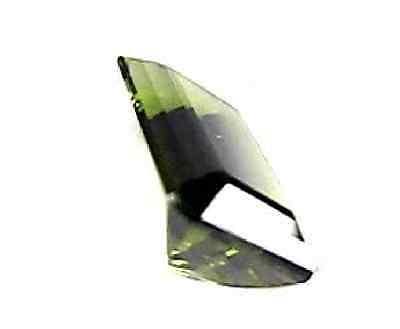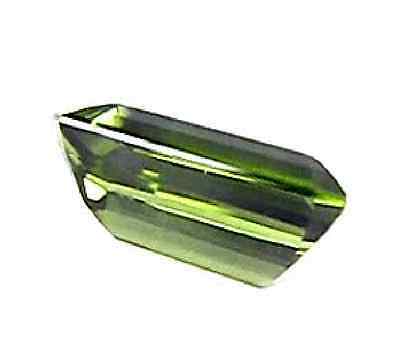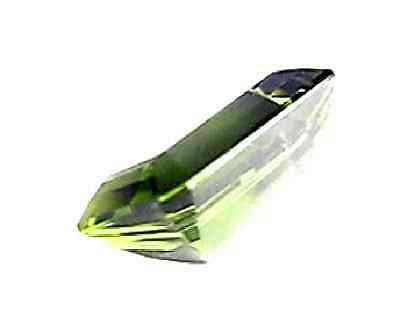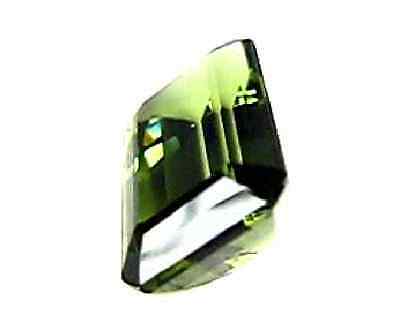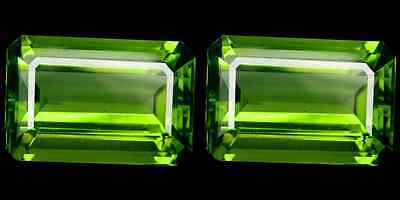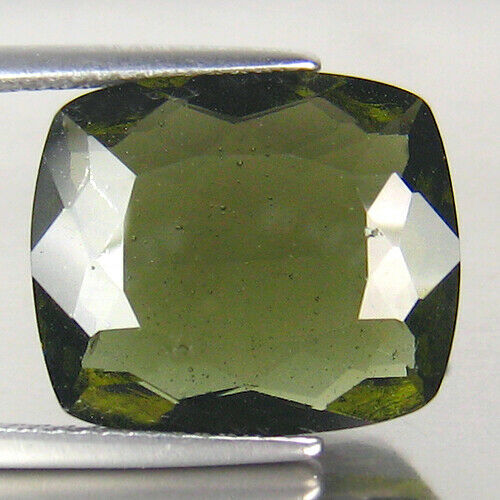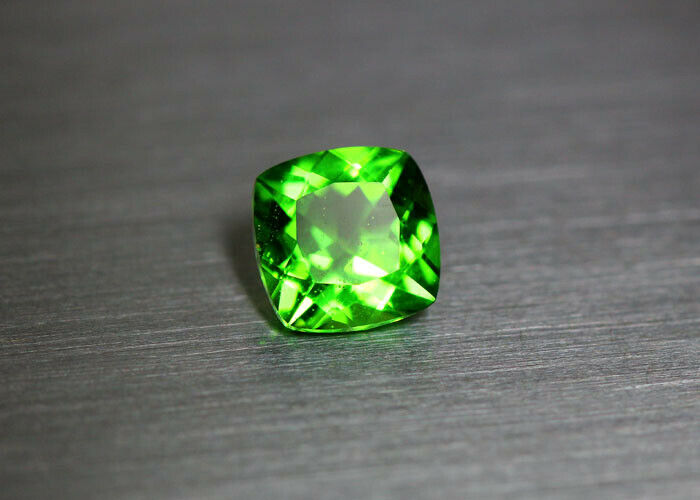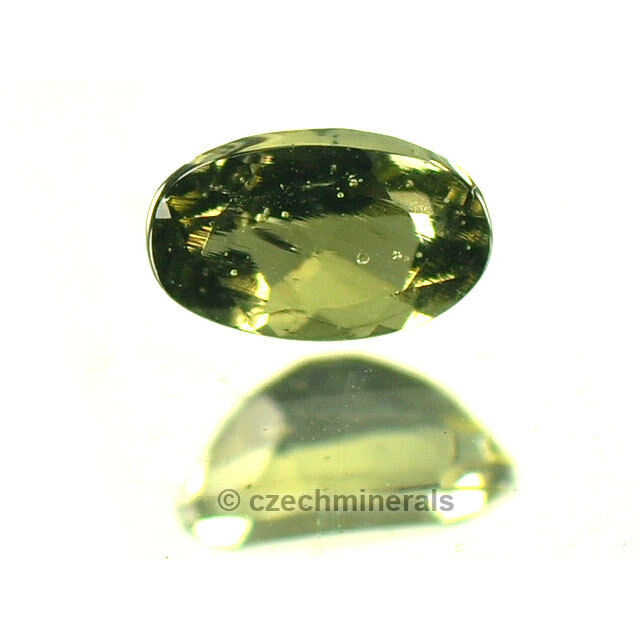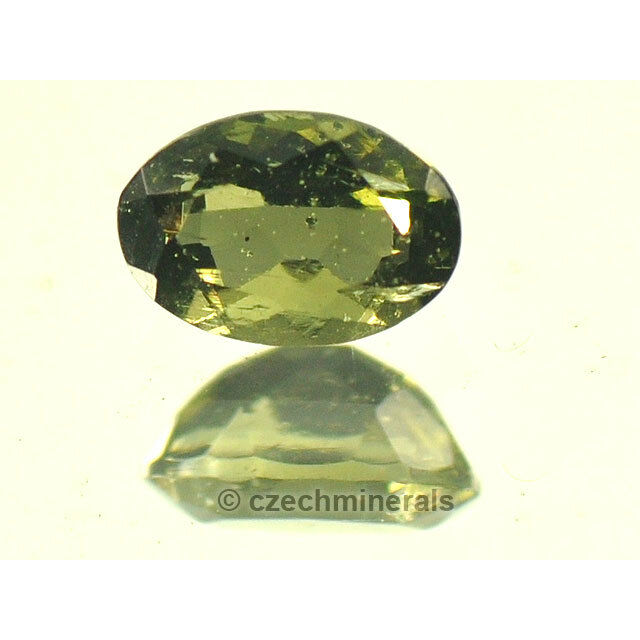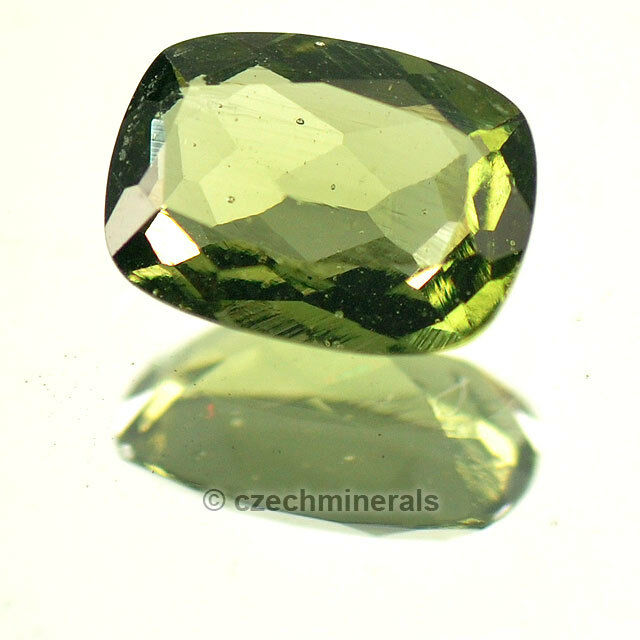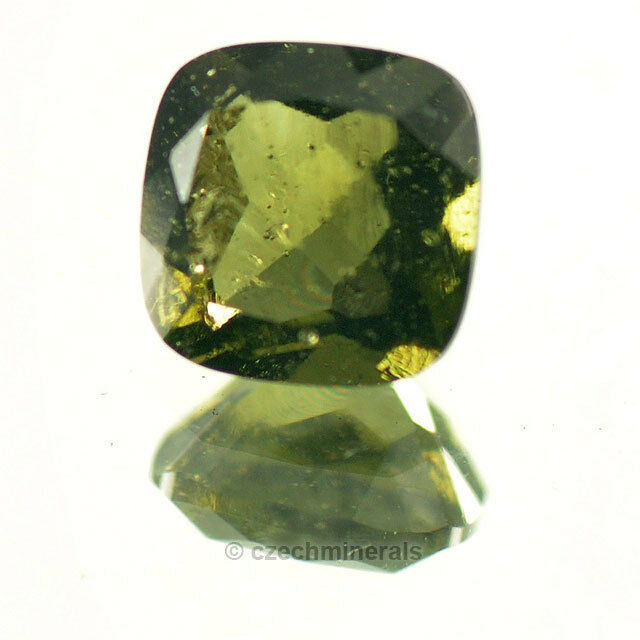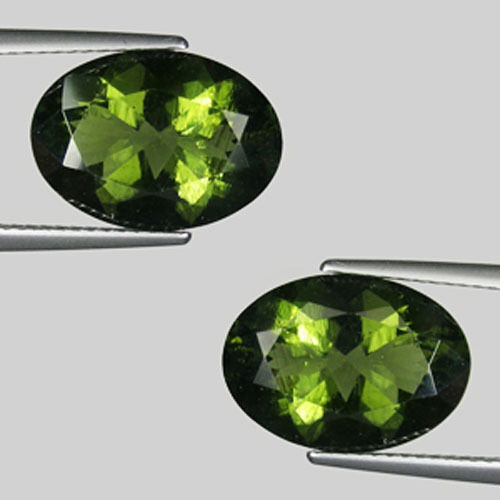-40%
9.93cts Rare Natural Octagon-cut Flashing-Fire Forest-Green IF Tektite Moldavite
$ 100.32
- Description
- Size Guide
Description
9.93cts Rare Natural Octagon-cut Flashing-Fire Forest-Green IF Tektite MoldaviteNew without Tags. This gem has never been used/placed/set in a setting.
It is utterly undamaged, unmarred and in perfect condition as expected of NWOTags.
I have included a Tektite Moldavite article below for your appreciation and enjoyment.
Summary of below:
"
Moldavite ...
is an olive-green to dull brown-green vitreous gemstone. The unusual green gem garnered much fame and attention owing to its unusual origin. Moldavite was thought to have been formed by condensed rock vapors after a meteorite impact. Moldavite belongs to the Tektite group of minerals, which is a small family of natural glass rocks. Moldavite is sometimes touted as 'the only known extraterrestrial gemstone on Earth', or as 'the gemstone born from the stars'." ... "Moldavite occurs in a variety of shades of green, including deep, forest-green and pale to olive-green. Some materials from Moravia are known to occur with greenish-brown color. The most desirable color is a pure, light to medium green with no brown, and not too dark in tone." ... "Most moldavite is not treated or enhanced in any way."
Type: Natural Tektite Moldavite
(personally confirmed as Tektite Moldavite by digital refractometer (RI=1.537), dichroscope (isotropic), polariscope, spectroscope, UV short&long-wave light, measured Specific Gravity=2.38,
naturally-formed Earth&meteoric glass
) -- captej2012
Color: Forest Green
Shape: Octagon-cut
Dimensions: 16.95mm x 11.24mm x 7.51mm
Weight: 9.93 cts
Luster: Flashing Fire
Clarity: IF
Hardness: 5.5 rating on the Mohs Scale
Treatment: Heated, Not Treated, Not Enhanced
Origin: Czech Republic
I bought this
Tektite Moldavite
because I love Studying the Cosmos.
But naming it
"Carl"
or calling it
"Billions&Billions"
just doesn't cut it...
So I named it in honor of my favorite Spielberg flick.
E.T. the Extra-Terrestrial
could not be more fitting -- for a
Tektite
.
You see, at a time, the impact energy of a meteor striking the Earth
vaporized itself and earth-rock upwards into a towering cloud.
When vaporized meteor-and-rock then cools and crystallizes,
it literally rains down from the cloud as chunks called
Tektites
.
ET
is a gem created from just such an extra-terrestrial
Tektite
.
This
Tektite
though was found in
Moldauthein
(of the Czech Republic).
Which explains why
ET
is also called a
Tektite Moldavite
.
Cool, huh? It's the coolest origin story ever of any gemstone...
We are now an eBay eStore enterprise focused on selling mostly Loose Natural Gemstones. Stay here, look around and learn. Via eBay Messaging, ask us questions, make an offer, and otherwise discuss your wishes, concerns and hopes. We pride ourselves as good-spirited folks having fun and doing our best to share the joy of Nature's most beautiful and enduring literal treasure -- Natural Gemstones. Though we list and sell by eBay standards, we strive for your confident satisfaction. Within eBay's code-of-conduct, we can also decide in your favor (within reason) for any concern. Expect to find us cheerful and trustworthy, and we will expect the same of you. For us, Negative FeedBack as a means of coercion is never needed and only degrades everyone's enjoyment in what should otherwise be a fun shopping experience. And finally, please enjoy my work as eBay's First (unofficial) Gemstone Poet. -- captej2012
=========================================================
From URL:
http://www.gemselect.com/gem-info/moldavite/moldavite-info.php
Moldavite Gemstone Information
About Moldavite - History and Introduction
Moldavite,
also known as the 'Bouteille Stone' or as 'Vltavin' in Czech, is an olive-green to dull brown-green vitreous gemstone. The unusual green gem garnered much fame and attention owing to its unusual origin. Moldavite was thought to have been formed by condensed rock vapors after a meteorite impact. Moldavite belongs to the Tektite group of minerals, which is a small family of natural glass rocks. Moldavite is sometimes touted as 'the only known extraterrestrial gemstone on Earth', or as 'the gemstone born from the stars'.
Moldavite
was once thought to be an artificial product, and for a long time, it was even believed to be a variety of volcanic
obsidian
glass. Moldavite was first introduced as 'chrysolites' by Professor Josef Mayer of Prague University. Later, the name 'chysolites' was replaced by 'moldavite' as it was to be named after 'Moldauthein' the town of where the first specimens of were discovered and described. Gem-quality moldavite is typically offered in two grades; regular and museum grade. The finest specimens are museum grade. Museum grade moldavite exhibits higher transparency and displays a distinct fern-like pattern. Regular moldavite is typically darker green, often brownish in color and its surfaces appear pitted or weathered.
Identifying Moldavite
Moldavite is a pale to dark-green or brown-green gemstone belonging to the tektite group of minerals. Gemologically, it is a type of natural glass with an amorphous crystal structure. It contains silicon dioxide (SiO2) and aluminum oxide (AlO3). It has a relatively good level of hardness, rating 5.5 on the Mohs scale. Its density ranges from 2.32 to 2.38 and its refractive index is similar to volcanic
glass obsidian
. Moldavite exhibits a vitreous luster when cut and polished and often has a rough, scarred surface.
Moldavite; Origin and Sources
Moldavite gets its name from the town of Moldauthein in the Czech Republic, where it was first found. Currently, moldavite deposits have been found in Southern and Northwestern Bohemia, Western Moravia, Lusatia (Germany) and Waldviertel (Austria). It is estimated that 99% of all moldavite is sourced from South Bohemia and 1% is sourced from South Moravia. Small, scattered findings of gem-quality moldavite have also been reported in Dresden, West Bohemia and Austria.
The total amount of moldavite in the world is estimated to be about 275 tons' worth. Previously, there were four moldavite mines in operation throughout the Czech Republic, but today only one pit remains, which legally produces moldavite on a commercial level. It is estimated that all gem-quality moldavite will be completely exhausted in about ten years' time.
Buying Moldavite and Determining Moldavite Value
Moldavite Color
Moldavite occurs in a variety of shades of green, including deep, forest-green and pale to olive-green. Some materials from Moravia are known to occur with greenish-brown color. The most desirable color is a pure, light to medium green with no brown, and not too dark in tone.
Moldavite Clarity and Luster
Moldavite can occur transparent to opaque. The finest specimens are transparent and are considered extremely rare. Most moldavite today is opaque with slight levels of translucency. Generally, the higher the transparency, the more valuable the stone. There is a great price difference between 'regular grade' and 'museum grade' moldavite.
Moldavite Cut and Shape
Moldavite is available in a variety of cuts and shapes. Only the finest and most transparent of materials are faceted, while the rest are typically traded in their natural rough state. The most common shapes are those that result from its molten formation, such as drop shape, disc shape, oval, elliptical or spiral shape, as well as 'splash' shapes which resemble patterns of spilled liquids. Bohemian moldavite is usually drop-shaped, while Moravian moldavite is spherical.
Moldavite Treatment
Most moldavite is not treated or enhanced in any way. However, moldavite is sometimes fused with other types of borosilicate glass.


